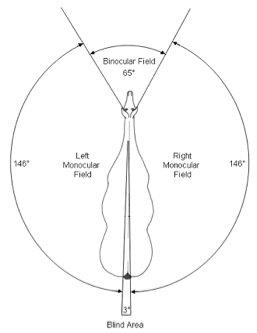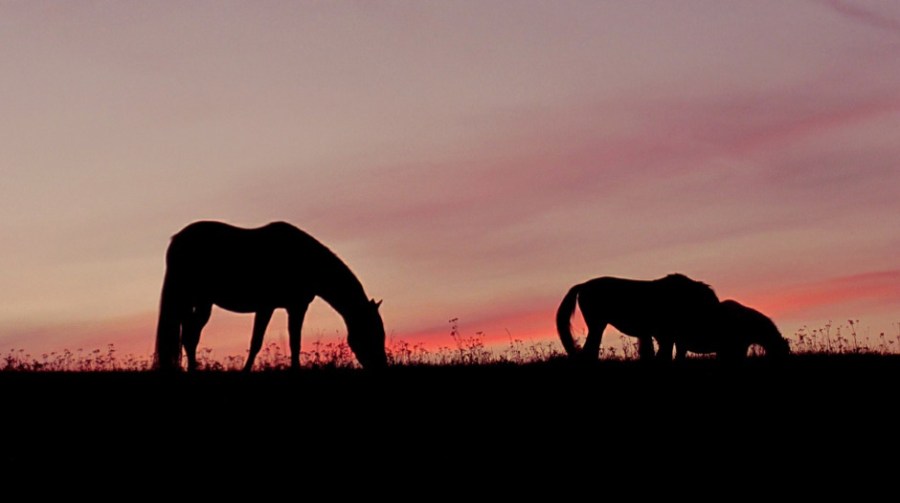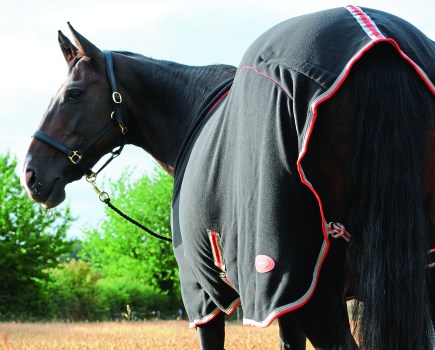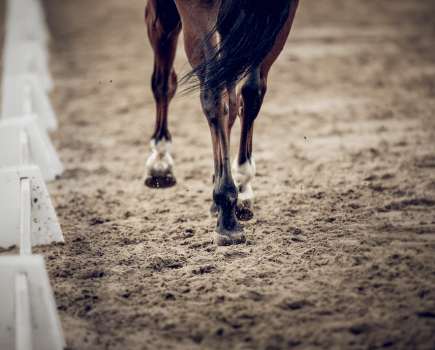Following on from the topic of colour vision in the last blog, this month Ilse discusses equine vision more generally.
When discussing the design of an animal’s eye, we must first consider its natural environment.
Horses evolved on the great plains, far removed from the stables and small fields we keep them in today.
Their main concern in life was to get enough food without becoming food for something else (something that hasn’t changed, although starvation and being eaten by wolves seems somewhat unlikely in this modern day!).
Their main predators were large mammals such as wolves and lions with snakes as an additional risk, meaning that the main sources of danger would approach the horse at ground level.
Consequently, the shape and form of their eyes ought to be keyed in to watching the horizon for any signs of these predators.
They must also be able to observe the ground in some level of detail in order to avoid injury when travelling, especially when in full flight away from danger.
Add to this that grass is relatively nutritionally poor, meaning that horses must east almost constantly, day and night to get enough energy.
Given these conditions, we’d predict a horse to have an eye with a large field of view in the horizontal direction in order to watch the horizon for danger.
Since predators can come from any direction, the ability to see what’s going on behind them would be useful too.
They need to be able to see the ground in front of them in enough detail to avoid falling down holes or other injuries.
Since jumping over obstacles is something of an equine speciality, the ability to judge distances accurately would be very useful!
Night vision would also help keep horses safe during midnight grazing. So how does the horse’s eye hold up to these predictions?
Pretty well actually. Unlike humans, horses have eyes on the sides of their heads, giving them a much bigger field of view.
It has been estimated that their visual range in the horizontal direction is as much as 200°, which means that they can see what is in front, at the side and, to some extent, what’s behind them.
However, they do have two blind spots: one just in front of their forehead and one just behind their tail. But given that they can move their heads, these blind spots don’t cause them too many problems – something of a relief to us riders!
Interestingly, the position of the horse’s head will change how much of the world they can see (more to follow on this next month…), something all riders should bear in mind.
 The next question is; how clearly can horses see the world? Is their vision sharp enough to see small details or would they, if they were humans, need glasses in order to drive?
The next question is; how clearly can horses see the world? Is their vision sharp enough to see small details or would they, if they were humans, need glasses in order to drive?
Well, the answer is that it depends on the part of the eye. Their visual acuity (the ‘sharpness’ of the image) is greatest towards the front of their visual field, so the part that looks in front of them, which makes sense given that the only time they need really good, sharp vision is when they’re assessing ground conditions.
In actual fact, even this ‘sharp’ region is still blurry in comparison to humans but it’s good enough to detect the hazards they need to.
Despite their not having sharp vision, there’s some evidence to show that horses are much more sensitive to movements than we are, which might explain why the slightest drift of a leaf on the ground can send some of our horses into an apparently inexplicable panic!
On the other hand, at night horses have much better vision than we do. This is due to their having both a bigger eye and having more rod cells (the cell type in the light-sensitive region of the eye responsible for low-light vision) than humans.
Although it’s clear that horses are able to judge distance quickly and accurately (otherwise how would they be able to jump anything?), it’s unclear whether they use stereo vision (information from both eyes simultaneously) or other cues such as shadows or the relative movement of objects against a background to judge distance (again, I’ll discuss this topic more in a future blog, so stay tuned!).
It’s no surprise that horses see the world differently from us, but it’s good to get to grips with just how differently they see things. Hopefully we can use this information to understand our horse’s apparently inexplicable behaviour and perhaps be just a little more sympathetic!










